Bitan Lab
From time to time, we'll profile a Department of Neurology lab and the important work it's doing in the field. Today we're highlighting the work of Dr. Gal Bitan and his team...
Lab Mission: "My field is trying to save the brain from its age-related deterioration and disease related deterioration, so that we can continue to think and feel and do. If I can achieve that for one person, if I can cure one person or treat one person meaningfully, I have achieved my goal." - Gal Bitan
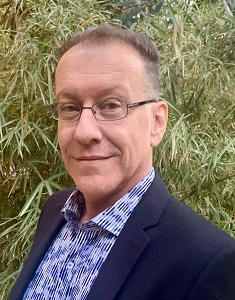
Gal Bitan, PhD
Position: Professor
Program: Alzheimer’s Disease
Graduate School: The Hebrew University of Jerusalem, Israel
Postdoc: Beth Israel-Deaconess Medical Center/Harvard Medical School; Brigham and Women’s Hospital/Harvard Medical School
Could you tell me about your lab’s focus?
BITAN: We are a lab that works on neurodegenerative diseases. Prominent examples are Alzheimer's disease, Parkinson’s disease, and ALS. In particular, we work on the phenomenon of protein aggregation, which basically means the molecules of a particular protein clump together. When they do that, they stop doing their normal role in the body. The clumps are also toxic; they shut down cells and eventually kill the cells.
In every disease, there is a particular protein, or sometimes more than one, that forms toxic clumps and they all have their favorite groups of cells they attack. So in Alzheimer's, this causes dementia; and in Parkinson's, it causes movement disorders, etc. My team works on understanding how these processes happen. But we are also a “translational lab.” We have a very strong emphasis on translation of the scientific findings to real-world solutions for patients with these diseases and the physicians who take care of them. Accordingly, the two main projects in the lab are on developing therapy and developing diagnostics.
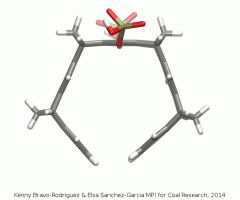
What were some of the key recent findings from your group?
BITAN: A drug development project in my lab has been going on now for over 10 years. We started with Alzheimer's disease. But very soon we realized that the drug (see illustration) is not specific for Alzheimer's disease, but rather it attacks the process of protein clumping in general and therefore can be used as a broad-spectrum therapy. This drug prevents the clumping of many different proteins and therefore is a very exciting molecule to work with. In recent years, we have been collaborating with many different labs around the world because each one has a model of a different disease or a unique method that can increase our understanding of how exactly the drug works. Some recent papers have been the fruit of those different collaborations.
For example, we published, together with [Clinic Medical Director, Prof.] Martina Wiedau in our department, the testing of this drug in a model of ALS. With a group in Austria, we published a paper showing that the drug candidate was effective in a model of multiple system atrophy, a very aggressive disease that currently doesn't have any treatment. And very recently with a group in Italy, we've shown that the drug candidate is highly effective in a group of diseases that are different from those that we studied, but share a common mechanism. Those are diseases called lysosomal storage diseases, which affect young children.
What are your next steps?
BITAN: Diagnostics can probably progress faster than drug development because the regulatory requirements are a little lower. We are hoping within a few years to get to the point that we have tested and validated our methods to the point that they can start to go to the clinics and people can start using them. The hope is that if we get good enough, beyond 90% sensitivity and specificity. If we can get close to 100%, the individual patient will be able to go to the lab, even at an early stage, and will be able to get a diagnosis of what they have, which will allow them to start treatment, when possible. Or if a treatment is not available yet, to go to a clinical trial. We also hope that our tests will then tell the physicians running the clinical trials, “Is the treatment effective for them or not?”
In the drug development area, we hope to get to the point that we can start a clinical trial. It won't be my lab, I'm not a physician, but it is my goal to get to the point where we have FDA approval to start a clinical trial. The real dream will be a clinical trial where we are testing our drug with our diagnostic tests. That would be really cool.
What do you anticipate to be the most significant advancement in in neurological research in the next 10 years?
BITAN: It's hard. You know, scientists don't like to make predictions [laughs]. But I think that there is a chance that we will develop much better ways to understand what is going on in the brain—without getting into the brain, which is challenging, but those techniques are advancing at a rapid pace these days.
I believe we’ll also understand more about how the brain interacts with the rest of the body, and especially with the bacteria in our body. There is a lot of research on the microbiome and that is particularly interesting in my fields—there are indications that Alzheimer's disease and Parkinson's disease might be responses to changes in the microbiome or to bacterial infections many years earlier.
In terms of therapy, I am very much hopeful that we will find a way to stop the harmful processes by which those clumping proteins kill cells in the brain. But then, of course, we need to start the treatment very early and prevent the disease. If we try to treat someone who already has symptoms, we know today the degenerative processes started in their brain maybe 10 or 20 years earlier and they have already accumulated a lot of damage. Again, this is years into the future, but I think that if we find a way to stop the harmful process, the next step will be to try to restore what was lost.
How has your lab been adapting to the current situation [discussion with Dr. Bitan was during COVID-19 stay-at-home orders]?
BITAN: We have switched to lab meetings by Zoom. It works! We actually have our lab meeting later today. Everybody is on board. I think everybody appreciates the chance of seeing everyone else once a week and sharing how they're doing. Most people are focusing on their writing right now. So I'm hoping that this will translate into a good show of productivity later this year. We obviously had to halt quite a lot of our experiments. We have two people who are still continuing to do some experiments by a special waiver from the School of Medicine, and they make sure they don't come to the lab at the same time. They are finishing essential experiments.
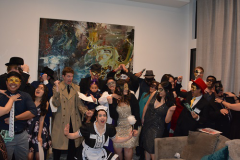
Could you tell me about the team in your lab and all of their roles in research?
BITAN: Our team includes senior and junior scientists. The most senior person is an assistant project scientist. There are several postdocs, graduate students, research associates, and seven or eight undergraduate students who are helping with the different projects. Everyone is very excited about working on neurodegenerative diseases. For the undergrads, I have a GPA cutoff to enter the lab so everyone needs to commit to keep their GPA above this cutoff and I check it every quarter. I'm proud to say that the GPA average has been going steadily up and we're around a 3.8 average at this point, which is pretty cool.
More from the Bitan Lab...
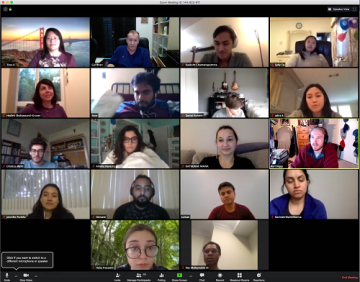
Bitan Lab team "Meeting" during quarantine
Team members: (from left to right)
Top Row: Tina Li (graduated), Gal Bitan, Sueksitt (Prem) Chantanapumma, Sally Tu
Second Row: Dr. Hedieh Shapasand-Kroner, Dr. Ibrar Siddique, Daniel Bolotin (no longer in the group), Adira Kruayatidee
Third Row: Ghattas Malki (graduated), Maggie Navarro, Katy Maina, Karl Biggs
Fourth row: Jennifer Portillo, Otmane Lahgui, Dr. Suman Dutta, Dr. Ravinder Malik
Last row: Helia Hosseini, Roy McRaynolds
Not pictured: Angela Nguyen
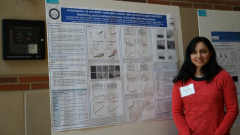
Ravinder Malik
Postdoctoral Scholar
Could you tell me about your role in the Bitan lab?
MALIK: I am leading the project on ALS. I perform experiments involved at different levels of investigation, such as in scientific animal models and with purified proteins. I am testing novel inhibitors of toxic protein aggregates implicated in the disease. I also help train and guide the undergraduate researchers involved in ALS projects.
The main objective of my project focuses on developing a treatment for ALS. I tested our lead molecule, called CLR01, and found it to be effective against multiple forms of toxic protein clumps found in familial and sporadic ALS. In scientific animal model studies, our lead molecule was able to successfully reduce the disease pathology in the spinal cord. This suggested that we can develop it for human trial in the future.
In a new project, I am exploring biomarkers in patient samples. This is important to do side-by-side to improve diagnosis and follow disease progression.
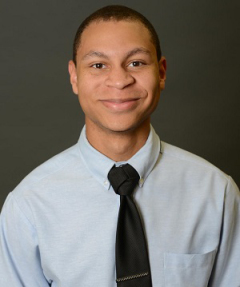
Roy McReynolds
Graduate Student
What interests you about the topic that you're working on?
MCREYNOLDS: What interests me is better understanding what's causing Alzheimer's disease and what's happening in the early stages of the disease where people don't show any symptoms but changes are happening in their brains. It is hypothesized that changes are happening 10-20 years before any symptoms first appear. I really want to try and dive into understanding the cellular changes that are happening in the brain prior to symptoms appearing in Alzheimer's disease, so that people can work on therapeutic approaches to target these cellular changes in the early disease stage, which could be good for prevention and slowing disease progression.
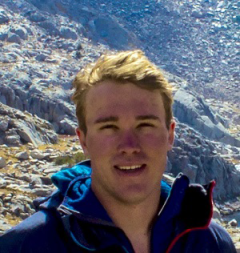
Karl Biggs
Research Associate
What do you like about working in the Bitan lab?
BIGGS: I joined my sophomore year, four and a half years ago. So a long, long time [laughs]. I ended up in a really good place. Compared to stories from my college friends of the PI never being around and other labs being really competitive, there's this air where people are on edge all the time. But I've never felt that at all in this lab. There are always open doors. Gal is always available to talk, always willing to teach, and he enjoys the mentoring process. I really lucked out in that regard.
The variety of projects is also really nice. I’m working on biomarkers and protein structure and function relationships. There are people doing mouse models, there are people doing drug studies, people do all different sorts of stuff and study all different types of diseases. This is why I want to stay in the field because I see there are so many different aspects to it. There's a lot going on and everything kind of feeds into each other, so the more diversity you have, the more crosstalk you can have between the different groups. We're working on different things, but everything kind of informs each other, which makes it a better environment.
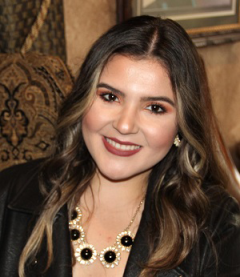
Maggie Navarro
Undergraduate Student Researcher
What is the culture like in the Bitan lab?
NAVARRO: Besides learning so much about Alzheimer's, Parkinson's disease, and other neurological diseases, I really like learning about the other people in the lab. Gal really makes sure to build an environment where everyone is comfortable with each other, where we like each other, where we understand each other, where we learn from each other. I see that every day. In our lab meetings, we go around to each person and share not only updates in the lab, but also outside of the lab—how they're doing personally, mentally, family-wise. We share with each other and do whatever we can to offer help or support or anything like that. Recently, we had a murder mystery dinner, which was really fun. My labmate and I did so badly because we were laughing the whole time that we got last place. It was a very fun experience to see everyone outside the lab.